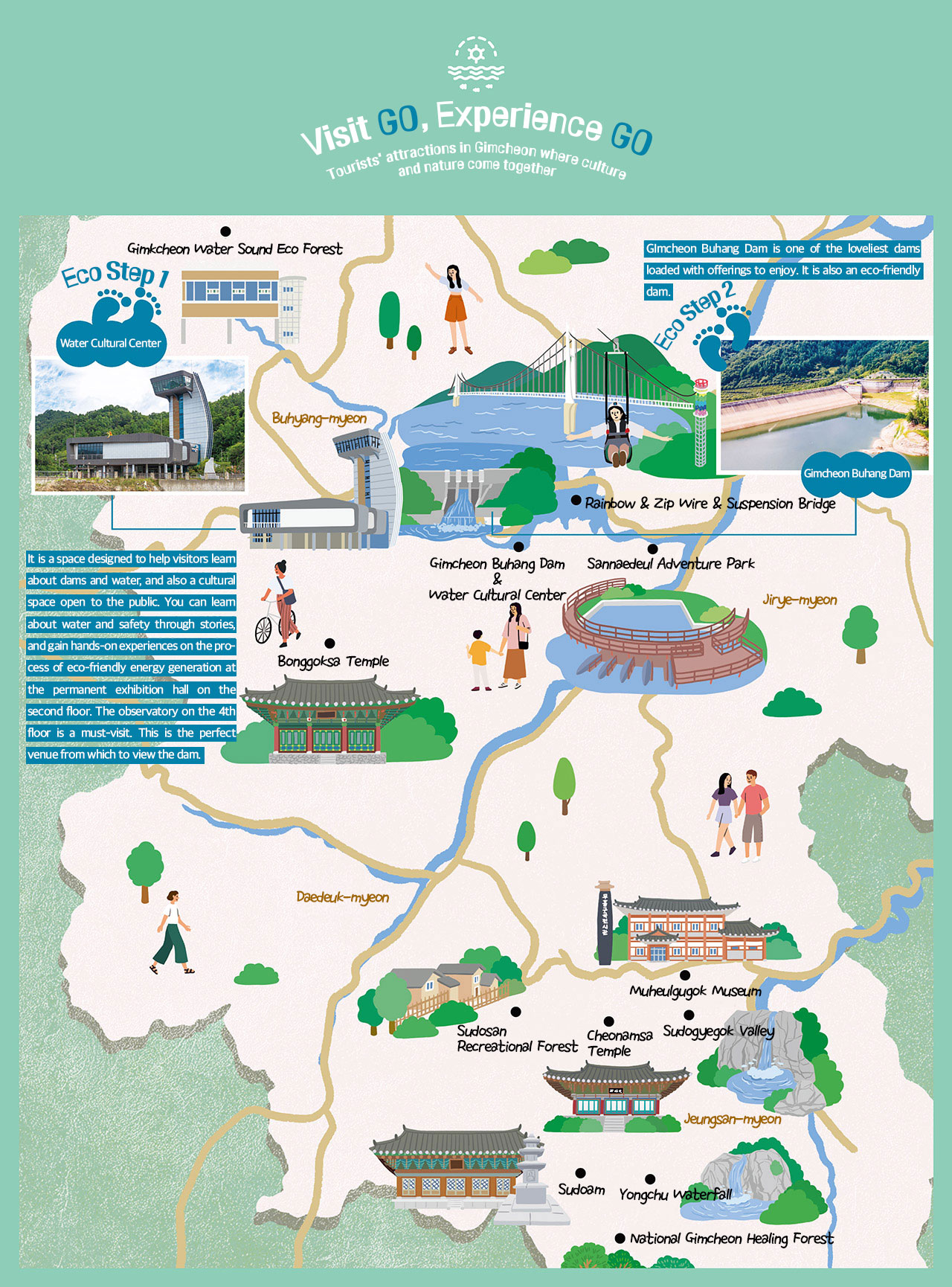-
 2022. August VOL. 653
2022. August VOL. 653
I dare use superlatives to describe the dam. Gimcheon Buhang Dam is outright the loveliest dam in Korea with lots of highlights to enjoy, and is an eco-friendly dam as well. You may think that a dam is just that and couldn’t be any different. But you will realize it is not just an ordinary dam once you visit it. The dam is full of creative sculptures and structures that are the longest, highest and a first-ever in Korea. The natural landscape that provides the backdrop for the dam is unique. It looks as if it is floating in the middle of a forest and is cradled by a large bowl of clear, blue water placed among a forest and field. The winding road stretches along the lakefront that is shaped like a rias shoreline, while the lush forest that unfolds along the road is just as beautiful as the dam itself.
Gimcheon Buhang Dam is a relatively small dam, with a total volume of 54 million tons and basin area of 82㎢. It is only 1/10 the size of Imha Dam in Andong, Gyeongsanbuk-do, but is one of the most well-known dams in the country. The dam drew keen attention when its construction began in 2013. At the center of national spotlight, it was associated with the bywords ‘tourism resources’ and ‘coexistence.’ The trifecta that makes Gimcheon Buhang Dam a national tourist attraction is the Rainbow Zip Wire, the highest in Korea; the first completely open skywalk; and the 256m-long suspension bridge, the longest in Korea. These three thrill-packed tourist attractions make up the so-called ‘Go · Cho · Jang’ tour. The term is derived three Korean words: ‘Go’ means ‘the highest’, ‘Cho’ means ‘the first’ and ‘Jang’ means ‘the longest.’
In addition, Sannaedeul Park offering an auto camping site, leisure facilities, and a swimming pool was opened and recently, the Eco & Recreational Pension has been opened, making the dam an even more fun place. These provide a few of the top reasons to set aside a day to visit Gimcheon Buhang Dam.
In a sense, speed and scenery are inversely proportional. The faster you move, the fuzzier the scenery appears. The slower you go, the clearer the scenery looks. Coexistence is one of the two key words that make Gimcheon Buhang Dam more than just a dam. Reflect on the meaning of the word as you walk at a leisure pace A trekking trail stretches along the edge of the lake at the dam. The trail, which is 8 km long and takes about two hours to finish, starts at the Water Cultural Center, runs along the embankment of the dam and connects the suspension bridge (spawning ground), Rainbow Zip Wire, Eco-Recreational Pension, Jijwa Bridge, Buhang Bridge and Yuchon Bridge before finally returning to the museum. Intertwined along the trail are the value of coexistence, and cultural and artistic content that this one-of-a-kind dam features.
Cultural and artistic content featuring mainly creative and ingenious sculptures are placed in spots where people least expect to see them around the Water Cultural Center, such as the surface of the intake tower, safety fences, the roof, and rocks. Facilities designed for local residents or the coexistence of animals and plants are scattered across the dam site.
The first thing that caught my eyes was the slope of the dam. Different kinds of trees and plants that grow around the dam are planted on different levels of the slope, making it look like a green hill or multicolored flower garden if seen from a distance. Both people and animals now come to enjoy the beautiful landscape. You can witness various efforts made to preserve the ecological corridors along and around the trail. The inside of both the right and left sides of the spillway(a structure used to control the released waterflow) is connected by an ecological corridor, and you can find otter habitats in many different parts of the dam, which have been created to protect the species designated as a natural monument. The spawning ground under the suspension bridge and artificial wetlands at the upper and lower streams of the dam are also worth a visit. Sometimes, the solar-powered water circulation apparatuses glisten on the surface of the blue water. Perhaps, these aspects are why the key word ‘coexistence’ stood out in my mind as I walked along the waterfront trail along Gimcheon Buhang Dam. Walking on the trail made me think how I can make my travel more friendly to nature and Earth.
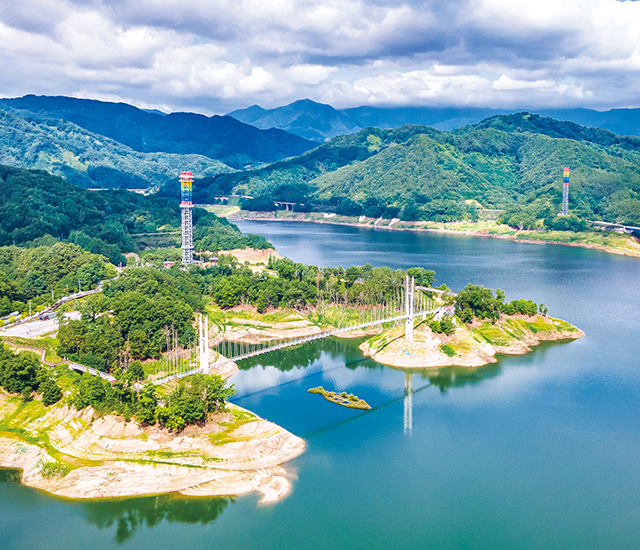

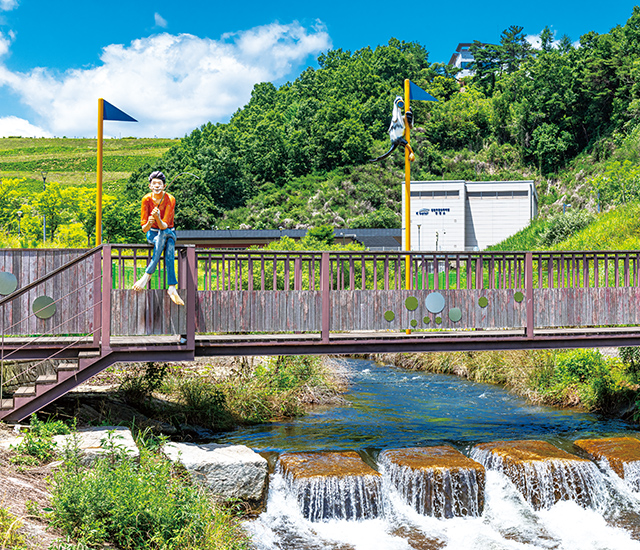
 The key word ‘coexistence’ stood out in my mind
The key word ‘coexistence’ stood out in my mind 
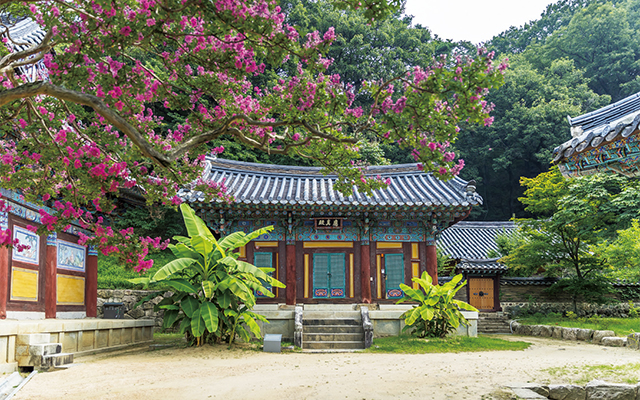
Jikjisa is a quiet and well-organized temple. Although it is large in size, things are calm, peaceful, and quiet, which makes it a great spot for a stroll. Walking becomes even better at this time of the year as crape myrtles bloom in bright red across the temple site. Please make sure you take a close look at Birojeon Hall and the four three-story stone pagodas that boast the sleek design. The centerpiece of the tour of the temple is Birojeon Hall holding one thousand sculptures of child monks. Some of the thousand sculptures look different, so try and find them.
![]() Address 95 Jikjisa-gil Daehang-myeon, Gimcheon-si, Gyeongsangbuk-do
Address 95 Jikjisa-gil Daehang-myeon, Gimcheon-si, Gyeongsangbuk-do
![]() Phone 054-429-1700~4
Phone 054-429-1700~4

Samyeogdaesa Park located right next to Jikjisa Temple was built to honor the spirits of a great Buddhist monk Samyeong who became a monk at the temple. The No. 1 landmark here is the Tower of Peace. The tallest tower in Korea at 41.5m in height is lacquered with no dancheong, traditional paintwork, preserving the natural wood grains and colors. Lights shine bright on the wooden tower at dusk, creating a beautiful summer night under the moonlight. The reflections on the surface of the lake Bugamji in front of the tower are alluring.
![]() Address 130 Jikjisa-gil Daehang-myeon, Gimcheon-si, Gyeongsangbuk-do
Address 130 Jikjisa-gil Daehang-myeon, Gimcheon-si, Gyeongsangbuk-do
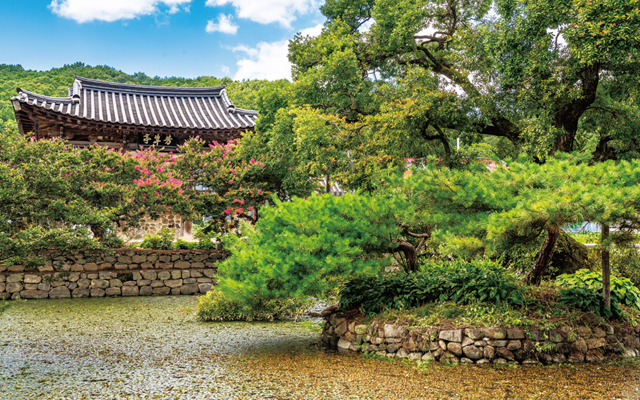
Bangchojeong is a two-story rectangular pavilion with an octagonal roof. The front is divided by three sections and the side by two sections. At the center of the second floor is one large ondol (heated floor) room. The pavilion has ten doors which make it possible to change the structure as seasons change. The floor, room, and the inside and outside of the pavilion building can be either separated or combined as necessary. The stone walls of Choi family in front of the pavilion are also worth a look. The walls over which the red blossoms of crape myrtles hang evoke the sad story of two women.
![]() Address 41 Sangjwawon 1-gil Guseong-myeon, Gimcheon-si, Gyeongsangbuk-do
Address 41 Sangjwawon 1-gil Guseong-myeon, Gimcheon-si, Gyeongsangbuk-do
